The Staff Selection Commission (SSC) conducts the Combined Graduate Level (CGL) Examination to recruit eligible candidates for various Group B and C posts in government departments and ministries. To prepare effectively, candidates must be familiar with the detailed SSC CGL Syllabus 2025 for both Tier 1 and Tier 2 stages of the exam. Understanding the syllabus is the first step toward a targeted preparation strategy.
What Is The Syllabus Of SSC CGL?
The SSC CGL syllabus includes all the subjects and topics that are asked in the Tier 1 and Tier 2 stages of the exam. Tier 1 covers four sections – General Intelligence & Reasoning, General Awareness, Quantitative Aptitude, and English Comprehension. Tier 2 includes advanced-level topics from Quantitative Abilities, English, Reasoning, Computer Knowledge, and General Awareness. For specific posts like JSO additional papers on Statistics is also part of the syllabus. Understanding the syllabus helps candidates plan their preparation in the right direction.
SSC CGL Syllabus Overview
The SSC CGL 2025 Notification is expected to be released soon, and it’s the right time to start your preparation. The syllabus for Tier 1 and Tier 2 has been carefully designed to assess candidates on various topics, including General Intelligence and Reasoning, Quantitative Aptitude, General Awareness, and English Comprehension.
| Category |
Details |
| Exam Name |
SSC CGL (Staff Selection Commission – Combined Graduate Level Exam) |
| Conducting Body |
Staff Selection Commission (SSC) |
| Exam Stages |
Tier 1 (Objective) → Tier 2 (Objective) |
| Mode of Exam |
Computer Based Test |
| Official Website |
ssc.gov.in |
SSC CGL Tier 1 Syllabus
To start your SSC CGL 2025 exam preparation in the right way, it is important to understand the syllabus properly. Knowing the syllabus in detail will help you compete better with other candidates. To make it easy for you, we have provided the latest SSC CGL syllabus 2025 in this article. You can check the details here or download the official syllabus PDF from ssc.gov.in.
SSC CGL Syllabus 2025 for General Intelligence and Reasoning
| General Intelligence and Reasoning Syllabus |
| Analogies |
Similarities and Differences |
| Space Visualization |
Spatial Orientation |
| Problem-Solving |
Analysis |
| Judgment |
Decision-Making |
| Visual Memory |
Discrimination |
| Observation |
Relationship Concepts |
| Arithmetical Reasoning |
Figural Classification |
| Arithmetic Number Series |
Non-Verbal Series |
| Coding and Decoding |
Statement Conclusion |
| Syllogistic Reasoning |
Semantic Analogy |
| Symbolic/Number Analogy |
Figural Analogy |
| Semantic Classification |
Symbolic/Number Classification |
| Figural Classification |
Semantic Series |
| Number Series |
Figural Series |
| Word Building |
Coding & Decoding |
| Numerical Operations |
Symbolic Operations |
| Trends |
Space Orientation |
| Space Visualization |
Venn Diagrams |
| Drawing Inferences |
Punched Hole/Pattern Folding & Un-folding |
| Figural Pattern Folding and Completion |
Indexing |
| Address Matching |
Date & City Matching |
| Classification of Center Codes/Roll Numbers |
Embedded Figures |
| Small & Capital Letters/Numbers Coding, Decoding, and Classification |
Click Here to Download SSC CGL Free Study Material PDF
SSC CGL Syllabus 2025 for Quantitative Aptitude
| Quantitative Aptitude Syllabus |
| Computation of whole numbers |
Fractions and relationships between numbers |
| Profit and Loss |
Time and distance |
| Time & Work |
Percentage |
| Ratio & Proportion |
Discount |
| Partnership Business |
Mixture and Allegation |
| Square roots |
Averages |
| Graphs of Linear Equations |
Triangle and its various kinds of centers |
| Congruence and similarity of triangles |
Interest |
| Basic algebraic identities of School Algebra & Elementary surds |
Circle and its chords |
| Regular Polygons |
Circle |
| Right Prism, Circular Cone, |
Right, Circular Cylinder, Sphere, |
| Heights and Distances |
Hemispheres, |
| Rectangular Parallelepiped |
Histogram |
| Regular Right Pyramid with triangular or square base |
SSC CGL Syllabus for English Language and Comprehension
| English Language and Comprehension Syllabus |
| Phrases and Idioms |
One-word Substitution |
| Sentence Correction |
Error Spotting |
| Fill in the Blanks |
Spelling Correction |
| Reading Comprehension |
Synonyms-Antonyms |
| Active Passive |
Sentence Rearrangement |
| Sentence Improvement |
Cloze Test |
SSC CGL Syllabus for General Awareness
| General Awareness Syllabus |
| History, Culture |
Geography, Economic Scene |
| General Policy & Scientific Research |
Science |
| Current Affairs |
Books and Authors |
| Sports |
Important Schemes |
| Important Days |
Portfolios |
| People in News |
India and its Neighboring Countries |
| Questions about History, Culture, Geography, Economic Scene, General Policy & Scientific Research |
| Questions about Science, Current Affairs, Books and Authors, Sports, Important Schemes, Important Days, Portfolios, People in the News |
SSC CGL Syllabus 2025 for Tier 2
The Tier 2 Exam is more advanced and assesses candidates on deeper concepts in mathematics and reasoning. Here’s a breakdown of the Tier 2 syllabus:
- Paper I: This is Compulsory for all posts,
- Paper II: This is for candidates who apply for the post of Junior Statistical Officer (JSO) in the Ministry of Statistics and Programme Implementation and
SSC CGL Tier 2 Syllabus for Paper 1
| Section |
Module |
Topics |
| Section I |
Mathematical Abilities |
- Number Systems: Computation of Whole Numbers, Decimals and Fractions, and Relationship between Numbers.
- Fundamental arithmetical operations: Percentages, Ratio and Proportion, Square roots, Averages, Interest (Simple and Compound), Profit and Loss, Discount, Partnership Business, Mixture and Alligation, Time and distance, Time and Work.
- Algebra: Basic algebraic identities of School Algebra and Elementary surds (simple problems) and Graphs of Linear Equations.
- Geometry: Familiarity with elementary geometric figures and facts: Triangle and its various kinds of centers, Congruence and similarity of triangles, Circle and its chords, tangents, angles subtended by chords of a circle, common tangents to two or more circles.
- Mensuration: Triangle, Quadrilaterals, Regular Polygons, Circle, Right Prism, Right Circular Cone, Right Circular Cylinder, Sphere, Hemispheres, Rectangular Parallelepiped, Regular Right Pyramid with triangular or square Base.
- Trigonometry: Trigonometry, Trigonometric ratios, Complementary angles, Height, and distances (simple problems only) Standard Identities like sin2θ + cos2θ=1, etc
- Statistics and probability: Use of Tables and Graphs: Histogram, Frequency polygon, Bar-diagram, Pie-chart; Measures of central tendency: mean, median, mode, standard deviation; calculation of simple probabilities
|
| General Intelligence and Reasoning |
- Semantic Analogy
- Symbolic operations
- Symbolic/Number Analogy
- Trends
- Figural Analogy
- Space Orientation and Semantic Classification
- Venn Diagrams
- Symbolic/ Number Classification
- Drawing inferences
- Figural Classification
- Punched hole/ pattern-folding & unfolding
- Semantic Series
- Figural Pattern folding and completion
- Number Series
- Embedded figures
- Figural Series
- Critical Thinking
- Problem-Solving
- Emotional Intelligence
- Word Building
- Social Intelligence
- Coding and de-coding
- Numerical operations
|
| Section II |
English Language And Comprehension |
- Spot the error
- Fill in the blanks
- Synonyms
- Antonyms
- Spelling/ detecting misspelled words
- Idioms & phrases
- One word substitution
- Improvement of sentences
- Active/ passive voice of verbs
- Conversion into Direct/Indirect narration
- Shuffling of sentence parts
- Shuffling of sentences in a passage
- Cloze passage
- Comprehension passage
|
| General Awareness |
- India and its neighboring countries especially pertaining to History, Culture, Geography, Economic Scene, General Policy & Scientific Research
- Science
- Current Affairs
- Books and Authors
- Sports
- Important Schemes
- Important Days
- Portfolio
- People in News
|
| Section II |
Computer Proficiency |
- Computer Basics: Organization of a computer, Central Processing Unit (CPU), input/ output devices, computer memory, memory organization, backup devices, PORTs, Windows Explorer. Keyboard shortcuts.
- Software: Windows Operating system including basics of Microsoft Office like MS Word, MS Excel PowerPoint, etc.
- Working with the Internet and e-mails: Web Browsing and searching, Downloading and uploading, Managing an E-mail Account, e-banking
- Basics of networking and cyber security: Networking devices and protocols, Network and information security threats (like hacking, viruses, worms, Trojans, etc.), and preventive measures.
|
SSC CGL Syllabus Paper 2: Statistics (for JSO post)
| Subject |
Topics |
| Statistics |
- Collection, Classification, and Presentation of Statistical Data – Primary and Secondary data, Methods of data collection; Tabulation of data; Graphs and charts; Frequency distributions; Diagrammatic presentation of frequency distributions.
- Measures of Central Tendency – Common measures of central tendency – mean median and mode; Partition values- quartiles, deciles, percentiles.
- Measures of Dispersion– Common measures of dispersion – range, quartile deviations, mean deviation, and standard deviation; Measures of relative dispersion.
- Moments, Skewness, and Kurtosis – Different types of moments and their relationship; the meaning of skewness and kurtosis; different measures of skewness and kurtosis.
- Correlation and Regression – Scatter diagram; simple correlation coefficient; simple regression lines; Spearman’s rank correlation; Measures of association of attributes; Multiple regression; Multiple and partial correlations (For three variables only).
- Probability Theory – Meaning of probability; Different definitions of probability; Conditional probability; Compound probability; Independent events; Bayes‟ theorem.
- Random Variable and Probability Distributions – Random variable; Probability functions; Expectation and Variance of a random variable; Higher moments of a random variable; Binomial, Poisson, Normal, and Exponential distributions; Joint distribution of two random variables (discrete).
- Sampling Theory – Concept of population and sample; Parameter and statistic, Sampling and non-sampling errors; Probability and nonprobability sampling techniques(simple random sampling, stratified sampling, multistage sampling, multiphase sampling, cluster sampling, systematic sampling, purposive sampling, convenience sampling, and quota sampling); Sampling distribution(statement only); Sample size decisions.
- Statistical Inference – Point estimation and interval estimation, properties of a good estimator, Methods of estimation (Moments method, Maximum likelihood method, Least squares method), Testing of hypothesis, Basic concept of testing, Small sample, and large sample tests, Tests based on Z, Chit-square and F statistic, Confidence intervals.
- Analysis of Variance – Analysis of one-way classified data and two-way classified data.
- Time Series Analysis – Components of time series, Determination of trend component by different methods, Measurement of seasonal variation by different methods.
- Index Numbers – Meaning of Index Numbers, Problems in the construction of index numbers, Types of index numbers, Different formulae, Base shifting and splicing of index numbers, Cost of Living Index Numbers, and Uses of Index Numbers.
|
SSC CGL Exam Pattern 2025 (Tier 1)
The Exam Pattern for SSC CGL Tier 1 Exam 2025 is tabulated below.
| Section |
No. of Questions |
Maximum Marks |
| General Intelligence & Reasoning |
25 |
50 |
| General Awareness |
25 |
50 |
| Quantitative Aptitude |
25 |
50 |
| English Comprehension |
25 |
50 |
| Total |
100 |
200 |
Are You Preparing for SSC CGL 2025? – Click Here to Clear All Your Doubts
SSC CGL Topics Asked in Exam
Based on the SSC CGL Tier-I exam paper that have been conducted in recent years, here is a section-wise table of topics covered, along with an approximate number of questions from each topic. This table will help students understand the weightage of different topics across sections.
General Intelligence and Reasoning
| Topic |
Approx. No. of Questions |
| Number & Letter Series |
2–3 |
| Coding-Decoding |
2–3 |
| Syllogism |
2 |
| Blood Relation |
1 |
| Classification (Odd One Out) |
1–2 |
| Analogy |
1–2 |
| Mirror & Paper Folding/Figure Image |
2–3 |
| Mathematical Operations |
2 |
| Venn Diagram/Statement-Conclusion |
2 |
| Embedded/Completion Figure |
2 |
| Alphabet-based Puzzle |
1 |
| Age-based Puzzle |
1 |
| Miscellaneous Logical Reasoning |
1–2 |
General Awareness
| Topic |
Approx. No. of Questions |
| Static GK (Festivals, Dance, Awards) |
3–4 |
| History |
2–3 |
| Geography |
1–2 |
| Polity |
2–3 |
| Economics |
1–2 |
| Science (Physics, Chemistry, Bio) |
4–5 |
| Current Affairs (Sports, Events) |
3–4 |
| Environment/Ecology |
1–2 |
| Art & Culture |
1 |
Quantitative Aptitude
| Topic |
Approx. No. of Questions |
| Profit & Loss / Discount |
2–3 |
| Time, Speed & Distance / Trains |
2 |
| Simple & Compound Interest |
1–2 |
| Time & Work / Pipes & Cisterns |
1–2 |
| Percentages / Ratio / Proportion |
2 |
| Averages / Ages |
2–3 |
| Geometry / Mensuration |
3–4 |
| Algebra / Trigonometry |
2–3 |
| Number System / Remainders |
1–2 |
| Data Interpretation (Pie/Bar Chart) |
2–3 |
| Simplification / Arithmetic Ops |
2–3 |
English Comprehension
| Topic |
Approx. No. of Questions |
| Synonyms / Antonyms |
2–3 |
| One-word Substitution |
1 |
| Idioms & Phrases |
1 |
| Sentence Improvement / Correction |
2–3 |
| Error Spotting |
1–2 |
| Active / Passive Voice |
1–2 |
| Direct / Indirect Speech |
1 |
| Fill in the Blanks |
1–2 |
| Jumbled Sentences |
1–2 |
| Reading Comprehension / Cloze Test |
4–5 |
| Spelling Correction |
1 |
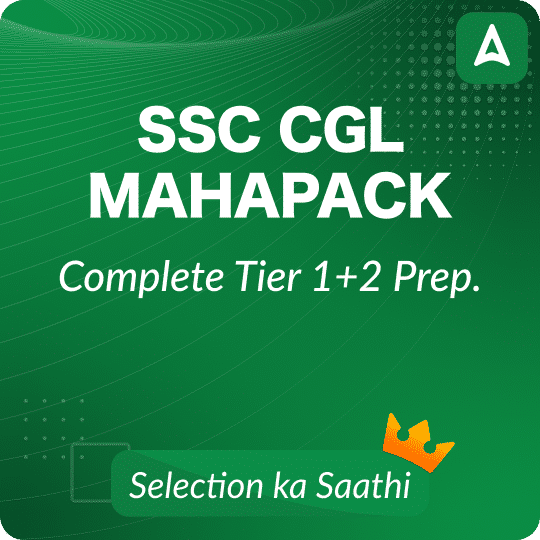

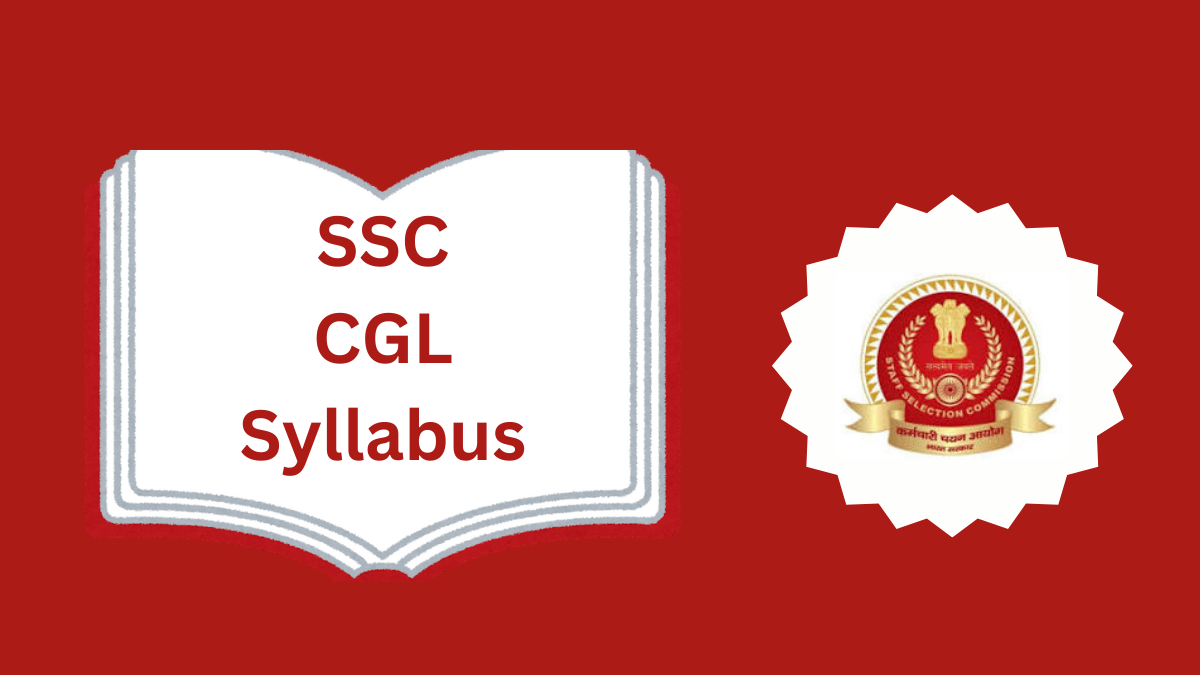


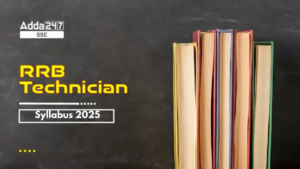 RRB Technician Syllabus 2025 and Exam Pa...
RRB Technician Syllabus 2025 and Exam Pa...
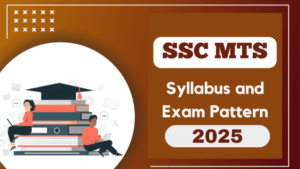 SSC MTS 2025 Syllabus and Exam Pattern, ...
SSC MTS 2025 Syllabus and Exam Pattern, ...
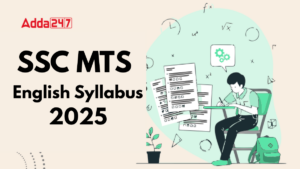 SSC MTS English Syllabus 2025, Check Top...
SSC MTS English Syllabus 2025, Check Top...


